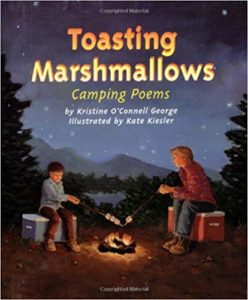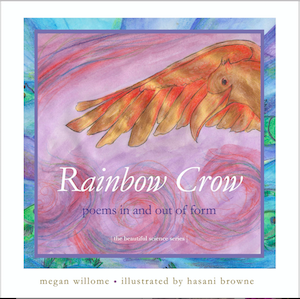
I saw a production of The Diary of Anne Frank, the play, in which the role of Anne was double-cast: a 13-year-old played Anne in act 1, and her 15-year-old sister played her in act 2. There was a moment where the two young women stood back-to-back, with the 13-year-old facing the audience, and then they turned around so that the 15-year-old faced us. That moment changed my understanding of the transformation Anne Frank underwent during those two years hiding in the Secret Annex.
Earlier this week, Glynn Young wrote about what it was like to visit the site in Amsterdam. Take a minute to read the post for some background about the Franks and the other members of the Secret Annex and to put yourself in the holy silence that is the Anne Frank House
Anne received the diary as a present for her 13th birthday, June 12, 1942. The Frank family went into hiding a month later. The last entry is August 1, 1944, not too long after Anne turned 15. The Annex was raided by the Nazis three days later.
Anne became aware she was writing for posterity because the Dutch government announced it would be making a collection of diaries and letters dealing with the war. Upon learning this information, she began revising and editing her diary.
“Of course, everyone pounced on my diary. Just imagine how interesting it would be if I were to publish a novel about the Secret Annex.”
Oh, Anne — it’s far more than “interesting.” It’s compelling. It’s Every Girl turning into Every Woman, except that it’s happening in a confined space with people living under unbelievable duress amid the backdrop of World War II and the Holocaust.
The diary has many versions: the a version, the original; the b version, with Anne’s edits; and the c version, edited by Otto Frank, who left out parts he found objectionable, like Anne’s feelings about her mother. More pages of the diary were discovered in 1998, and these are included in the Definitive Edition.
I read the c version in early middle school, before our sex ed class with the golf coach. I did not know then that all of Anne’s musings, questions, and feelings about sex and sexuality were deleted. The c version was first published in 1947, and the Foreword says, “it was not customary to write openly about sex, and certainly not in a book for young adults.” I didn’t even know these parts of the diary existed until the dudes on Overdue covered the book this summer.
Craig Getting and Andrew Cunningham are a little goofy, but they never fail to give me what I need to know regarding any given book. Like this nugget from Craig: “I was struck by the ties that she [Anne] was making between knowing herself physically and knowing herself spiritually, emotionally, and as a person.”
I’ve made that journey from 13 to 15 and have watched a daughter go through it too, and I agree that knowing yourself physically is part of knowing who you are. But as someone who reads a lot of YA and middle-grade fiction, it’s too often overlooked, even by contemporary authors. Menstruation is momentous when it comes and then never mentioned again until its absence, signaling pregnancy. Hint: There’s a lot that happens in between. Anne gives us the in between.
The first time she mentions her period, she says she’s had it three times, and it’s already become a part of who she is.
“I have the feeling that in spite of all the pain, discomfort, and mess, I’m carrying around a sweet secret. So even though it’s a nuisance, in a certain way I’m always looking forward to the time when I’ll feel that secret inside me once again.”
Near the end of the book Anne mentions her period again, after a description of the spoiled food the eight residents of the Secret Annex are eating because there’s nothing else. She shows us — without telling us — that she’s starving:
“I haven’t had my period for more than two months, but it finally started last Sunday. Despite the mess and bother, I’m glad it hasn’t deserted me.”
If not for the Nazi’s persecution of Jews, Anne would probably have had her questions about human sexuality answered by friends or possibly by her parents. But she’s trapped with five adults and two teenagers all focused on survival. So she addresses her questions to Kitty, her name for her diary.
Anne recalls that her friend Jacque shared this useful summary of the facts of life: “Where the ingredients go in is where the finished product comes out.” While accurate, this nugget leaves out some details Anne craves. Eventually she turns to Peter. Turns out, he has questions too.
“I found it amusing that he thought the opening in a woman’s body was simply left out of the illustrations.”
Amusing? Maybe appalling. So Anne explains to Peter the mysteries of the female body, everything a guy should know. He responds this way:
“He thinks we women are quite tough to be able to withstand the loss of blood, and that I am too.”
Anne is tough, and not only because she withstands this normal part of femaleness. She’s tough while having to remain quiet for fear of being discovered. She’s tough when burglaries happen. She’s tough when insulted by adults who should know better can’t help themselves, under the circumstances. She’s tough in her on-again, off-again relationship with her mother. She’s tough amid her despair, depression, vanity, and cowardice (her words). She’s tough because she is denied what she needs most — to be able to go outside.
“The best remedy for those who are frightened, lonely or unhappy is to go outside, somewhere they can be alone with the sky, nature and God.”
Because Anne is a young woman still discovering who she is, she expresses contradictory opinions. We like to quote her when she says inspirational things, like, “I still believe, in spite of everything, that people are truly good at heart,” but not when she says, in the last line of the diary, “if only there were no other people in the world.” But I suspect if we could read the minds of 13- to 15-year-olds worldwide, we’d find similar highs and lows.
“Which of the people here would suspect that so much is going on in the mind of a teenage girl?”
It’s precisely because so much is going on in the mind of every teenage girl that this book endures. Without the historical significance of the diary, few readers would care what one young girl wrote about growing up over a two-year period. We should care, all of us who have grown up or are helping someone else grow up. On the Overdue podcast, Andrew describes the universal process this way: “It’s like there are two sides of a coin. And one side is the narcissist one, where you’re like, ‘I’m a person!’ And then later is the one where you’re like, ‘Everyone else is a person too.’”
Many of us who have traveled from age 13 to age 15 already know our bodies and ourselves. Many of us know we matter, and we (hopefully) know everyone else matters too. But there is something about reading Anne’s diary, knowing she will never experience more of sex than a kiss, will never become a mother herself, that makes her diary far, far more than simply interesting. It’s like being handed the keys to the secret universe of a young girl.
_______________
The next Children’s Book Club will meet Friday, November 14. We’ll read Toasting Marshmallows: Camping Poems by Kristie O’Connell George, illustrated by Kate Kiesler.
Photo by Hubble ESA, Creative Commons, via Flickr. Post by Megan Willome, author of The Joy of Poetry.
Browse more Children’s Book Club
“Megan Willome has captured the essence of crow in this delightful children’s collection. Not only do the poems introduce the reader to the unusual habits and nature of this bird, but also different forms of poetry as well.”
—Michelle Ortega, poet and children’s speech pathologist
- Perspective: The Two, The Only: Calvin and Hobbes - December 16, 2022
- Children’s Book Club: A Very Haunted Christmas - December 9, 2022
- By Heart: ‘The night is darkening round me’ by Emily Brontë - December 2, 2022


Laura Lynn Brown says
I have not read the Definitive Edition. But I am zeroing in on this:
“We like to quote her when she says inspirational things, like, ‘I still believe, in spite of everything, that people are truly good at heart,’ but not when she says, in the last line of the diary, ‘if only there were no other people in the world.'”
Why do we prefer the neat and tidy, something we might enshrine on a mug or poster or plaque? Why does the latter make us itch, something more suited to an ironic T-shirt?
I reread her whole last entry here — https://didyouknowfacts.com/hot-aug-1st-anne-franks-last-diary-entry-august-1st-1944-said/ — and there’s such a tug-of-war between her public and private self. I wonder whether it’s partly because the inspirational helps us to believe we can transcend our knowledge of the hardness of hearts, to keep going in hard times (“If she could believe that given what was happening and in danger of happening, then surely so can I”) , and the latter is too close to our own internal tugs, whatever age we are.
To invoke this month’s Friendship Project theme, does the inspirational bar to the door to having difficult conversations?
Apologies if I’m wandering too far from your intentions with this post.
Megan Willome says
No apology necessary. You raise good questions.
I actually thought the “good at heart line” ended the diary. That it did not spoke volumes to me.
I like your idea of the tug between our public and private selves. Teens live that profoundly every day.
Sandra Heska King says
Laura always has good questions.
Sandra Heska King says
“It’s precisely because so much is going on in the mind of every teenage girl that this book endures.”
I don’t think I ever knew there were pieces edited out. Of course, it’s been years (and years and years) since I read it. I mostly remember the hope. And then gazed out on the sapling from Anne’s tree of hope when we visited the Holocaust Memorial Center.
I said this over on FB, but I asked the oldest grand (who will be 16 next week) if she’d read the book. And she responded in caps, “YES, OF COURSE. FAV BOOK.” I’m figuring this edition might speak more to her current struggles, so I’ve sent her a copy of it.
Thanks for this, Megan.
Megan Willome says
Sandy, I love hearing how the book resonates with a current teenager! I found it more powerful than ever, with the benefit of the hindsight that comes from 1) now being grown up, and 2) now having a daughter who is (mostly) grown up.
Brad says
Reading the Diary now after a recent visit to the Anne Frank House in Amsterdam. Now I can “see” her as she writes. Very moving.
Megan Willome says
Oh, Brad, what a rich experience to read the diary right after seeing the house! I’d love to hear your thoughts on Anne’s words when you finish.